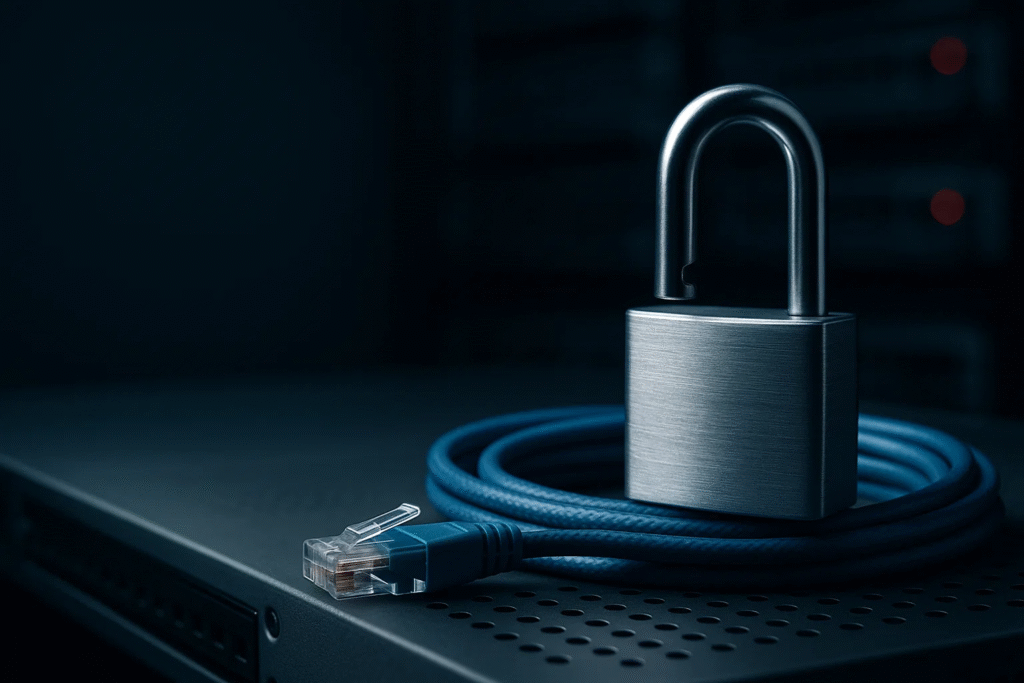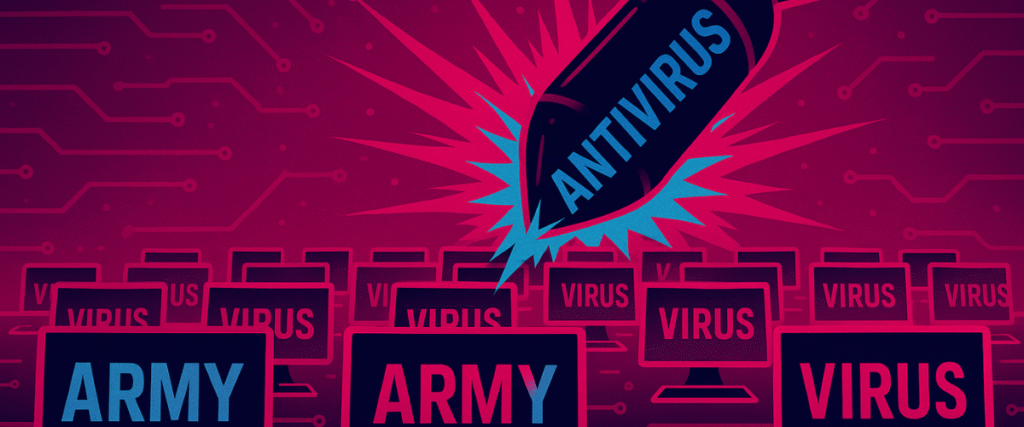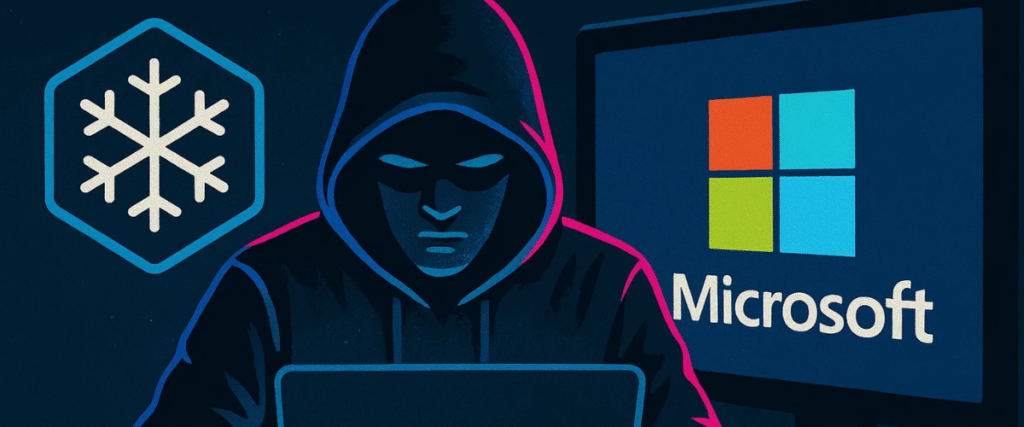Critical Trend Micro Apex One Zero-Day Actively Exploited —
Immediate Mitigation Required
Attackers are exploiting a critical zero-day in Trend Micro Apex One. Apply the mitigation tool, restrict console access, and prepare for the August patch now.
Overview
Trend Micro has disclosed two critical zero-day vulnerabilities—CVE‑2025‑54948 and CVE‑2025‑54987—affecting its Apex One Management Console for on-premises deployments on Windows systems. One of these flaws is already being actively exploited in the wild.
The Vulnerabilities Unpacked
- CVE‑2025‑54948 enables a command injection attack: an attacker with access to the management console can upload malicious code and execute arbitrary system-level commands due to inadequate input validation.
- CVE‑2025‑54987 is effectively the same vulnerability repackaged for a different CPU architecture.
Importantly, exploitation requires a pre-authenticated attacker—someone who already has remote or physical access to the management console.
Exploitation Status & Products Affected
- Active exploitation has been observed for at least one of the two CVEs, though Trend Micro hasn’t confirmed which one.
- Affected platforms include Apex One On‑Premise (2019) up to Management Server Version 14039, Apex One as a Service, and Trend Vision One Endpoint Security – Standard Endpoint Protection.
Vendor Response & Mitigation Strategy
- Cloud-based services (Apex One as a Service and Trend Vision One) were already patched as of July 31, 2025.
- For on-premise installations, a mitigation tool has been released to temporarily block exploitation. Clients should apply this immediately.
- Full patching for on-premise platforms is expected around mid‑August 2025.
- Trend Micro also recommends reinforcing perimeter security, limiting external exposure of the console, and reviewing remote access policies.
Broader Context: Why This Matters
Endpoint security consoles like Apex One are high-value targets—they act as gatekeepers across corporate networks. If compromised, attackers can deploy ransomware, execute espionage, or maintain persistent access.
This incident echoes previous cases:
- September 2023: A zero-day (CVE‑2023‑41179) related to uninstalling third-party security software was patched following active exploitation.
- June 2025: Trend Micro patched five local privilege escalation/code injection vulnerabilities (CVE‑2025‑49154 to CVE‑2025‑49158) affecting Apex One, underscoring the product’s sensitive risk profile.
Key Takeaways
| Priority | Action |
| Immediate Mitigation | Apply Trend Micro’s advisory tool to limit exposure until patches are available. |
| Prepare for Patch Release | Plan for on-premise patching rollout expected by mid‑August 2025. |
| Strengthen Security Posture | Restrict access to the management console and review remote access controls. |
| Audit Past Flaws | Assess previous vulnerabilities (e.g., CVE‑2023‑41179) for potential leftovers or weak controls. |
Summary
If you’re managing Apex One on-premise, this zero-day is urgent. Apply mitigation today, bolster access controls, and get ready for the mid‑August patch. Trend Micro’s cloud customers, meanwhile, should ensure updates from July 31 are fully applied. Additionally, organizations must stay vigilant and proactive in their cybersecurity efforts to protect against future vulnerabilities and threats, such as the Trend Micro Apex One zero-day.
Featured links:
FAQ:
Which Trend Micro products are affected by the Apex One zero-day vulnerabilities?
Covers the list of impacted platforms (Apex One On-Premise, Apex One as a Service, Trend Vision One Endpoint Security).
What immediate steps should organizations take to mitigate the risk?
Addresses the mitigation tool, restricting console access, and preparing for the mid-August patch.
Why are zero-day vulnerabilities like CVE-2025-54948 and CVE-2025-54987 so dangerous for businesses?
Explains the high-value nature of endpoint consoles, risks of ransomware/espionage, and the need for proactive cybersecurity measures.
Our Cybersecurity Guarantee
“At Fusion Cyber Group, we align our interests with yours.“
Unlike many providers who profit from lengthy, expensive breach clean-ups, our goal is simple: stop threats before they start and stand with you if one ever gets through.
That’s why we offer a cybersecurity guarantee: in the very unlikely event that a breach gets through our multi-layered, 24/7 monitored defenses, we will handle all:
threat containment,
incident response,
remediation,
eradication,
and business recovery—at no cost to you.
In recent months, the cybersecurity landscape has witnessed a surge in zero-day vulnerabilities, emphasizing the need for proactive measures. For instance, organizations should conduct regular security audits to identify and remediate potential weaknesses before they can be exploited. Tools that simulate attacks can provide valuable insights into the effectiveness of existing security measures and highlight areas needing improvement.
Ready to strengthen your cybersecurity defenses? Contact us today for your FREE network assessment and take the first step towards safeguarding your business from cyber threats!
The emergence of vulnerabilities like the current Trend Micro Apex One zero-day highlights the increasing sophistication of cyber threats. Organizations must prioritize vulnerability management as part of their overall cybersecurity strategy. Implementing a robust patch management processes can significantly reduce the attack surface available to cybercriminals. Regular training for IT staff on emerging threats also ensures that they are equipped to respond effectively to vulnerabilities as they arise.
To further mitigate risks associated with zero-day vulnerabilities, businesses should consider implementing a zero-trust security model. This approach involves verifying every device and user attempting to access the network, thus minimizing the chances of unauthorized access. Additionally, organizations can leverage threat intelligence feeds to stay informed about the latest vulnerabilities affecting their systems and respond accordingly.
Regular communication with stakeholders and end-users about security measures can foster a culture of security awareness within organizations. Awareness training can empower employees to recognize potential threats, such as phishing attempts, and understand their role in protecting sensitive information. Reinforcing security policies and procedures can further solidify this commitment to cybersecurity.
In addition, organizations should develop an incident response plan that outlines procedures to follow in case of a security breach. This plan should include roles and responsibilities, communication strategies, and steps for containment and recovery. Regular drills can help ensure that all team members are familiar with the process and can act quickly to minimize damage.
Moreover, collaboration with industry peers and cybersecurity experts can provide valuable insights and best practices that enhance security protocols. Participating in information-sharing platforms can help organizations learn from collective experiences and adapt to evolving threats. Engaging with the cybersecurity community can also open doors to advanced training and resources.
In conclusion, the ongoing threat posed by vulnerabilities such as the Trend Micro Apex One zero-day should serve as a wake-up call for organizations. By adopting a proactive approach to cybersecurity, including robust training, regular audits, and a culture of awareness, businesses can enhance their defenses against current and future threats. Keeping abreast of patch releases and ensuring implementation is another cornerstone of effective security strategy.
As cyber threats continue to evolve, maintaining a strong security posture is essential. By understanding and addressing vulnerabilities like the Trend Micro Apex One zero-day, businesses can safeguard their networks and data from potential breaches. Regularly consulting with cybersecurity professionals to assess security measures will ensure organizations are prepared to face any challenges that may arise.
A proactive stance not only helps mitigate the risks associated with zero-day vulnerabilities but also builds trust with clients and stakeholders. Assurance that robust security measures are in place can enhance reputation and customer loyalty. Therefore, investing in cybersecurity is not merely a technical necessity but a strategic business decision.
Ultimately, cybersecurity is a shared responsibility, and all employees play a vital role in protecting organizational assets. By fostering an environment where security is prioritized, organizations can ensure they are better equipped to handle interruptions and threats in the digital landscape.





















































































